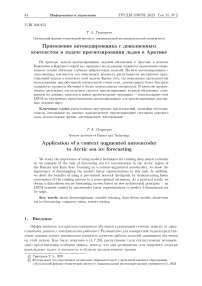Применение автокодировщика с дополненным контекстом в задаче прогнозирования льдов в Арктике
Автор: Григорьев Т. А.
Журнал: Труды Московского физико-технического института @trudy-mipt
Рубрика: Информатика и управление
Статья в выпуске: 2 (58) т.15, 2023 года.
Бесплатный доступ
На примере задачи прогнозирования ледовой обстановки в Арктике в регионе Баренцева и Карского морей мы проводим исследование важности применения современных техник обучения глубоких нейросетевых моделей. На базе автокодировщика с дополненным контекстом мы показываем важность распутанности внутренних представлений модели в контексте этой задачи. Кроме того, мы показываем преимущества использования предобученной контрольной точки сети, демонстрируя более быструю сходимость процесса обучения к более оптимальному экстремуму. В качестве практического результата мы получаем систему прогнозирования ледовой обстановки, основанную на данных, используя новые архитектурные принципы - использование сети LSTM на внутренних представлениях автокодировщика для прогнозирования двумерных ледовых карт.
Распутывание внутренних представлений, трансфер обучения, модели, основанные на данных, краткосрочное прогнозирование состояния морского льда, компьютерное зрение, дистанционное зондирование
Короткий адрес: https://sciup.org/142238155
IDR: 142238155 | УДК: 004.852
Текст научной статьи Применение автокодировщика с дополненным контекстом в задаче прогнозирования льдов в Арктике
Эффективность алгоритмов машинного обучения в решающей степени зависит от представления данных, с которыми они работают. Релевантное для конкретной задачи представление данных может значительно повысить качество работы моделей машинного обучения на. этой задаче. Как было показано в [1,7,20], распутанные (или статистически независимые) представления особенно ценны, потому что они релевантны для широкого спектра, прикладных задач, в частности, в области компьютерного зрения.
«Московский физико-технический институт (национальный исследовательский университет)», 2023
В работе [15] был разработан новый, более гибкий подход к задаче получения распутанных внутренних представлений неразмеченных данных, вдохновленный наблюдениями за тем, как биологический мозг решает эту задачу. Вместо того, чтобы использовать специализированную архитектуру для факторизации по определенной группе преобразований, авторы изменили процесс обучения так, чтобы заставить кодировщик создавать более предсказуемые представления изображений. Для этого они отказались от обучения автокодировщика в предположении независимости и одинакового распределению обучающих примеров выборки. Вместо этого авторы обучают его на условно связанных примерах, представленных в виде троек (изображение, преобразование, результат).
В то же время в практических задачах, где количество данных обычно сильно ограничено, часто используется предобучение, то есть инициализация процесса оптимизации контрольной точкой нейросети, предварительно обученной на некотором большом наборе данных. В то время как это стало де-факто стандартом в дискриминативных задачах (таких как регрессия и классификация), в ряде работ [6,16,18,19,24-26] исследуются различные методы трансфера обучения генеративных моделей на новые наборы данных и сообщается о значительных преимуществах по сравнению с обучением ее с нуля как с точки зрения качества генерации, так и скорости сходимости. Авторы [6], в частности, обнаружили, что для современных генеративно-состязательных сетей выгоднее производить трансфер обучения с источника с разреженными и разнообразными данными, а не плотными и однородными. Таким источником данных может выступать, например, датасет ImageNet.
Объединяя оба эти наблюдения, мы проводим исследование применимости вариационного автокодировщика с дополненным контекстом к задаче прогнозирования ледовой обстановки в Арктике на примере региона Баренцева и Карского морей вокруг острова Новая Земля. Кроме того, следуя [6], мы изучаем влияние предобучения этой модели на датасете Tiny ImageNet [21], адаптированном под нашу модель.
Много работ посвящено прогнозированию морского льда в Арктике. Однако исследования в этой области в основном сосредоточены на изучении климата, а не на оперативных прогнозах морского льда на один или несколько дней вперед. Полносвязный многослойный персептрон (MLP) часто используется либо как основной метод прогнозирования среднемесячной концентрации морского льда [12], либо как один из бейзлайнов [23, 27]. В качестве карт концентрации морского льда (SIC) в этих работах используются данные NSIDC Nimbus-7 SMMR и DMSP SSMI/SSMIS. В других подходах используются сверточные нейросети (CNN), применяемые к участкам, вырезанным из ледовых карт [23], или случайный лес (RF) с дополнительным набором входных данных о погоде из ERA-Interim [28]. В этих работах методы глубокого обучения сравниваются с более простыми бейзлайнами, и сообщается, что они значительно лучше работают в терминах стандартных метрик, таких как RMSE. Из наиболее близких к нашей работе можно выделить [5]. Однако ее авторы сосредотачивают свои усилия на построении основанной на данных системы прогноза льдов (на базе сети U-Net) и изучении ее статистических и прогнозных свойств, в то время как мы ставим своей целью построить релевантный протокол обучения и подтвердить выводы авторов [6,15] на примере реальной практической задачи, аналогичной рассматриваемой в [5].
Основные вклады нашей работы заключаются в следующем.
1) Мы проектируем протокол обучения вариационного автокодировщика и автокодировщика с дополненным контекстом на задаче прогнозирования льдов в Арктике и протокол тестирования качества их внутренних представлений и подтверждаем выводы [15] об этих представлениях.
2) Мы воспроизводим предобучение на большом и разнообразном датасете Tiny ImageNet, аналогично авторам [6], и подтверждаем их выводы о важности предобучения на примере нашей генеративной постановки задачи.
3) Все это позволяет построить систему прогнозирования ледовой обстановки, основан-
- ную на данных, как и в работе [5], но основанную на других архитектурных принципах. 2. Постановка эксперимента2.1. Данные 2.2. Модели
Доступно множество источников с данными сплоченности морского лвда, охватывающих период с самого начала спутниковой эры до настоящего времени [3,10,11]. Тем не менее пассивно-микроволновые источники концентрации морского лвда являются хорошим инструментом для крупномасштабной оценки состояния лвда и усвоения данных в совместной модели океана и морского лвда с высоким разрешением. К сожалению, они охватывают каждую областв толвко один или два раза в денв и с данными слишком низкого разрешения (10-50 км [10]), для того чтобы их можно было использовать с учетом требований конечных пользователей [2,9,22]. Мы сосредоточились на поиске спутникового источника данных с более высоким разрешением, чтобы обеспечить прогноз, сравнимый по разрешению (с точки зрения радиуса деформации Россби) с результатами численного моделирования морского льда. Хотя стоит отметить, что даже разрешения в 3 км не всегда может быть достаточно для решения задач тактического планирования маршрутов судов [22]. Мы представляем наш анализ состояния морского льда, основанный на JAXA1 данных третьего уровня концентрации морского льда высокого разрешения, полученного с помощью усовершенствованного микроволнового сканирующего радиометра-2 (далее AMSR2) со спутника GCOM-W. Яркостная температура AMSR2 L1B, полученная из температуры антенны L1A, затем передискретизируется в центральные пиксели (т. е. L1R) и обрабатывается в данные второго уровня. Данные же третьего уровня являются результатом последующей пространственной и статистической временной обработки [17]. Ежедневные данные о концентрации морского льда доступны со 2 июля 2012 года с пространственным разрешением 5 км на регулярной сетке, что является самым высоким разрешением среди других датасетов с SIC, которые мы смогли найти в открытых источниках (SSMI, SSMIS и похожие). Данные SIC приведены в процентах (%) от 0 до 100. Нами были использованы данные со 2 июля 2012 года по 20 января 2022 года, т. е. за период в 6970 дней. Исследовательские данные AMSR2 L3 о концентрации морского льда доступны в виде двух ежедневных наборов полос, получаемых во время восходящих и нисходящих спутниковых пролетов. В нашем исследовании мы используем среднее значение между этими двумя наборами, полагая, что у него меньше случайные и систематические ошибки, нежели чем у каждого из пролетов по отдельности. Аналогичный подход используется и в работе [5].
Мы рассматриваем вариационный автокодировщик [14] и автокодировщик с дополненным контекстом [15] как две наши основные модели. Для прогнозирования на один день мы используем сеть LSTM [8], обученную на латентных кодах моделей.
Наша модель автокодировщика с дополненным контекстом состоит из двух сверточных кодировщиков, двух сверточных декодировщиков с общим набором параметров и одной полносвязной сети, которая обучается преобразованиям в их скрытом пространстве Z. Все эти сети учатся вместе с помощью градиентного спуска с оптимизатором Adam, максимизируя вариационную нижнюю оценку правдоподобия данных.
В нашей реализации мы использовали следующий набор А допустимых преобразований, релевантных рассматриваемой задаче (не выводящих за распределение данных):
-
• тождественное преобразование;
-
• мультипликативное уменьшение/увеличение яркости с коэффициентами 1.15 и 1.32;
• степенное уменьшение/увеличение яркости с коэффициентами 1.15 и 1.32.
2.3. Трансфер обучения
3. Результаты
Каждому преобразованию из этого списка мы присвоили уникальный номер. После этого на каждом шаге обучения выбираем объект жі из нашего набора данных с определенным преобразованием а из A и получаем объект Ж2, применяя а к жі. Затем вычисляем выход вариационного автокодировщика для обоих объектов — жі и Ж2. Одновременно мы оцениваем вероятность p(z2|zi, а) объекта Z2 при за данном zi и его наиболее вероятное преобразование а с помощью полносвязной сети, упомянутой выше.
В практических дискриминативных задачах (например, регрессии или классификации), особенно в режиме малых данных, часто оказывается полезно предобучить используемую модель на большом датасете с внешними данными. Такой прием называется трансфером обучения нейросети с одной задачи на другую. Как было показано в работе [6], его можно также проделать и в случае генеративной постановки задачи.
Для инициализации обучения мы используем датасет Tiny ImageNet и предобучаем обе модели — VAE и Category-VAE — в течение одной эпохи на всем датасете (100 000 изображений). Чтобы не менять архитектуру сетей, мы преобразуем цветные изображения размером 64 х 64 исходного датасета в черно-белые размером 384 х 512 нашего целевого датасета (путем преобразования grayscale и растяжения).
Для начала мы обучили обе модели в течение 50 эпох на исходном тренировочном датасете без аугментаций. В качестве метрики качества обученной модели мы использовали средний квадрат ошибки прогноза концентрации льда на один день (SIC MSE). Результаты тестирования обученных моделей на тестовой подвыборке приведены в табл. 1. Видно, что, несмотря на несколько худшее исходное качество восстановления (декодировки) тестового набора из закодированных представлений, качество прогноза модели Category-VAE оказывается лучше такового у обычного VAE. Это можно связать с тем, что задача построения распутанных представлений, как она ставится перед первой моделью, сложнее задачи построения обычных представлений, что негативно влияет на качество кодирования изображений. Но одновременно, поскольку представления получаются более распутанные, динамика льда в них лучше улавливается прогностическим блоком LSTM.
Таблица!
Первая серия экспериментов
|
Модель |
Аугментации |
Кол-во эпох |
Исходи. MSE |
Прогнозн. MSE |
|
VAE |
нет |
50 |
12.2 ± 1 . 5 |
25 . 7 ± 1 . 2 |
|
Category-VAE |
нет |
50 |
13 . 5 ± 1 . 9 |
21.9 ± 2 . 5 |
Т а б л и ц а 2
Вторая серия экспериментов
|
Модель |
Аугментации |
Кол-во эпох |
Исходи. MSE |
Прогнозн. MSE |
|
VAE |
Да |
100 |
9.34 ± 0 . 24 |
25 . 0 ± 3 . 4 |
|
Category-VAE |
Да |
100 |
10 . 7 ± 0 . 9 |
21.6 ± 1 . 9 |
Чтобы убедиться, что используемые в модели Category-VAE аугментации не оказывают влияния на обучение сами по себе, мы также провели дополнительную серию экспериментов, где включили аугментации в исходный датасет для обеих моделей и увеличили количество обучаемых эпох в два раза. Результаты приведены в табл. 2. Из нее видно, что ошибка при восстановлении закодированных данных уменьшилась, но она же для прогноза осталась примерно на том же уровне для обеих моделей. Это свидетельствует о том, что ошибка при построении прогноза в большей степени зависит не от качества представлений автокодировщиков, а от их распутанности, которая в случае Category-VAE оказывается выше.
Т а б л и ц а 3
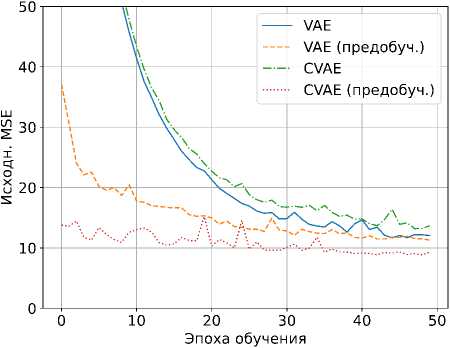
а)
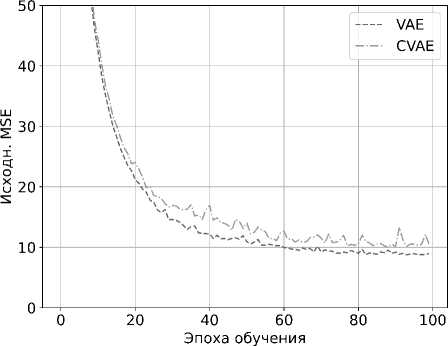
б)
Рис. 1. Кривые обучения моделей для а) первой и третьей серий экспериментов (обучение на. 50 эпохах) и б) второй серии экспериментов (обучение на. 100 эпохах)

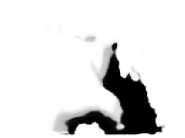

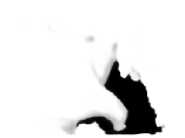
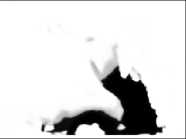
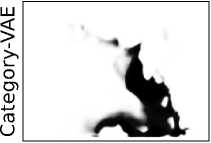

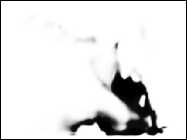
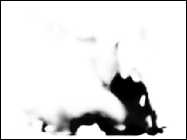
Третья серия экспериментов
|
Модель |
Аугментации |
Кол-во эпох |
Исходи. MSE |
Прогнозн. MSE |
|
VAE |
нет |
50 |
11.4 |
24.5 |
|
Category-VAE |
нет |
50 |
9.6 |
20.8 |
Рис. 2. Примеры прогноза, ледовых карт лучшими конфигурациями моделей в сравнении с реальными данными. Черным цветом изображен лед, белым — вода. Видно, что Category-VAE улавливает больше топких деталей, таких как разрывы внутри основного массива, льда, чем обычный VAE
В финальной серии экспериментов мы предобучили обе модели на предобработанном датасете Tiny ImageNet, чтобы продемонстрировать влияние предобучения на большом разреженном датасете на качество решения исходной практической задачи. Результаты представлены в табл. 3. Из нее видно, что во всех случаях метрики несколько уменьшились. Кроме того, графики на рис. 1 наглядно демонстрируют, насколько предобученная на Tiny ImageNet контрольная точка каждой модели превосходит ее случайную инициализацию. В итоге это приводит к более быстрой сходимости процесса оптимизации и лучшему оптимуму, что подтверждает выводы работы [6]. На рис. 2 приведены примеры предсказаний лучших конфигураций моделей карты льдов в сравнении с реальными данными.
4. Заключение
В этой работе на примере практической задачи прогнозирования ледовой обстановки в Арктике в регионе Баренцева и Карского морей мы провели исследование важности современных техник обучения глубоких нейросетевых моделей и подтвердили их применимость и важность в этой задаче. Мы спроектировали протокол обучения вариационного автокодировщика и автокодировщика с дополненным контекстом и протокол тестирования качества их внутренних представлений и подтвердили выводы о преимуществе распутывания представлений в контексте нашей задачи. Кроме того, мы воспроизвели предобучение на большом и разнообразном датасете Tiny ImageNet и подтвердили выводы о важности предобучения на примере нашей задачи. Все это позволило построить систему прогнозирования ледовой обстановки, основанную на данных, используя новые архитектурные принципы — использование сети LSTM на внутренних представлениях автокодировщика для прогнозирования двумерных ледовых карт.
Список литературы Применение автокодировщика с дополненным контекстом в задаче прогнозирования льдов в Арктике
- Bengio Y., Courville A., Vincent P. Representation Learning: A Review and New Perspectives // IEEE Transactions on Pattern Analysis and Machine Intelligence. 2013. V. 35, N 8. P 1798–1828. URL: https://doi.org/10.1109/tpami.2013.50.
- Blockley E., et. al., The future of sea ice modeling: where do we go from here? // Bulletin of the American Meteorological Society. 2020. V. 101, N 8. E1304–E1311.
- Cavalieri D.J., Parkinson C.L., Vinnikov K.Ya. 30-year satellite record reveals contrasting arctic and antarctic decadal sea ice variability // Geophysical Research Letters. 2003. 30(18).
- Chi J., Kim H.-Ch. Prediction of arctic sea ice concentration using a fully data driven deep neural network // Remote Sensing. 2017. 9(12). URL: https://www.mdpi.com/2072-4292/9/12/1305.
- Grigoryev T., Verezemskaya P., Krinitskiy M., Anikin N., Gavrikov A., Trofimov I., Balabin N., Shpilman A., Eremchenko A., Gulev S., Burnaev E., Vanovskiy V. Data-driven shortterm daily operational sea ice regional forecasting // Remote Sensing. November 2022. 14(22):5837.
- Grigoryev T., Voynov A., Babenko A. When, why, and which pretrained GANs are useful? // International Conference on Learning Representations. 2022.
- Higgins I., Matthey L., Pal A., Burgess Ch.P., Glorot X., Botvinick M.M., Mohamed Sh., Lerchner A. beta-vae: Learning basic visual concepts with a constrained variational framework // 5th International Conference on Learning Representations, ICLR 2017, Toulon, France. April 24–26 2017 // Conference Track Proceedings. OpenReview.net. 2017.
- Hochreiter S., Schmidhuber J. Long short-term memory // Neural computation. 1997. 9(8):1735–1780.
- Hunke E., Allard R., Blain Ph., Blockley E., Feltham D., Fichefet Th., Garric G., Grumbine R., Lemieux J.-F., Rasmussen T., et. al., Should sea-ice modeling tools designed for climate research be used for short-term forecasting? // Current Climate Change Reports. 2020. 6(4):121–136.
- Kern S., Lavergne Th., Notz D., Pedersen L.T., Tonboe R. Satellite passive microwave seaice concentration data set inter-comparison for arctic summer conditions // The Cryosphere. 2020. 14(7):2469–2493.
- Kern S., Lavergne Th., Notz D., Pedersen L.T., Tonboe R.T., Saldo R., Sorensen A.M. Satellite passive microwave sea-ice concentration data set intercomparison: closed ice and ship-based observations // The Cryosphere. 2019. 13(12):3261–3307.
- Kim J., Kim K., Cho J., Kang Y.Q., Yoon H.-J., Lee Y.-W. Satellite-based prediction of arctic sea ice concentration using a deep neural network with multi-model ensemble // Remote Sensing. 2019. 11(1).
- Kim Y.J., Kim H.-C., Han D., Lee S., Im J. Prediction of monthly arctic sea ice concentrations using satellite and reanalysis data based on convolutional neural networks // The Cryosphere. 2020. 14(3):1083–1104.
- Kingma D.P., Welling M. Auto-encoding variational bayes, 2013.
- Kuzminykh D., Kushnareva L., Grigoryev T., Zatolokin A. Category-learning with contextaugmented autoencoder // Информационные технологии и вычислительные системы. Cентябрь 2020. Вып. 3. С. 30–39.
- Li Y., Zhang R., Lu J., Shechtman E. Few-shot image generation with elastic weight consolidation // arXiv preprint arXiv:2012.02780, 2020.
- Lu J., Heygster G., Spreen G. Atmospheric correction of sea ice concentration retrieval for 89 GHZ AMSR-E Observations // IEEE Journal of Selected Topics in Applied Earth Observations and Remote Sensing. 2018. 11(5):1442–1457.
- Mo S., Cho M., Shin J. Freeze discriminator: A simple baseline for fine-tuning gans // arXiv preprint arXiv:2002.10964. 2020.
- Noguchi A., Harada T. Image generation from small datasets via batch statistics adaptation // Proceedings of the IEEE/CVF International Conference on Computer Vision. 2019. P. 2750–2758.
- Schmidhuber J. Learning factorial codes by predictability minimization // Neural Computation. November 1992. 4(6):863–879.
- Tavanaei A. Embedded encoder-decoder in convolutional networks towards explainable AI. 2020.
- Wagner P.M., Hughes N., Bourbonnais P., Stroeve J., Rabenstein L., Bhatt U., Little J., Wiggins H., Fleming A. Sea-ice information and forecast needs for industry maritime stakeholders // Polar Geography. 2020. 43(2–3):160–187.
- Wang L., Scott K.A., Clausi D.A. Sea ice concentration estimation during freeze-up from sar imagery using a convolutional neural network // Remote Sensing. 2017. 9(5).
- Wang Y., Gonzalez-Garcia A., Berga D., Herranz L., Khan F.Sh., van de Weijer J. Minegan: effective knowledge transfer from gans to target domains with few images // Proceedings of the IEEE/CVF Conference on Computer Vision and Pattern Recognition. 2020. P. 9332–9341.
- Wang Y., Wu Ch., Herranz L., van de Weijer J., Gonzalez-Garcia A., Raducanu B. Transferring gans: generating images from limited data // Proceedings of the European Conference on Computer Vision (ECCV). 2018. P. 218–234.
- Zhao M., Cong Y., Carin L. On Leveraging Pretrained GANs for Generation with Limited Data // PCML. 2020.
- Kim Y.J., et. al., Prediction of monthly Arctic sea ice concentrations using satellite and reanalysis data based on convolutional neural networks // The Cryosphere. 2020. V. 14, N 3. P. 1083–1104. URL: https://tc.copernicus.org/articles/14/1083/2020/.

